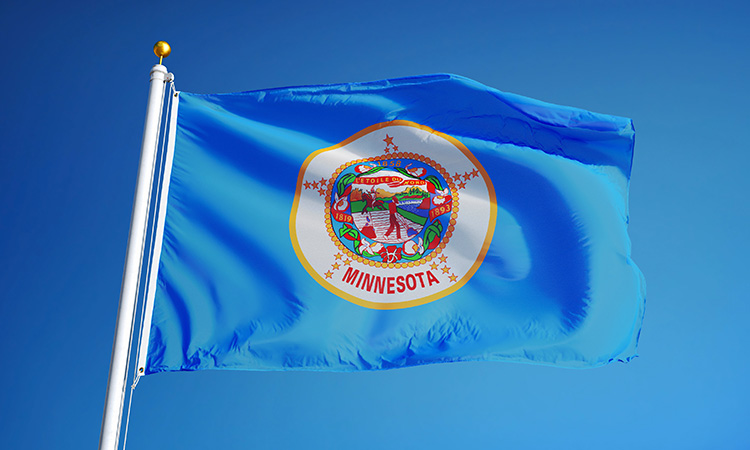Understanding the Basics of Security Deposits in Minnesota
In the state of Minnesota, security deposits play an essential role in the landlord-tenant relationship. These deposits act as a form of financial protection for landlords while giving tenants peace of mind. It is crucial for both parties to understand the basics of security deposits to ensure compliance with Minnesota law.
What is a Security Deposit?
A security deposit is a sum of money paid by the tenant to the landlord at the beginning of a lease agreement. It serves as a form of security against any potential damages or unpaid rent during the tenancy. The deposit is held by the landlord until the lease ends, at which point it is either returned to the tenant or used to cover any outstanding obligations.
What is the Purpose of a Security Deposit?
The primary purpose of a security deposit is to protect the landlord’s property from damage beyond normal wear and tear and to cover any unpaid rent. It provides a level of security for landlords in the event of lease violations or financial loss.
Are There Any Legal Requirements for Security Deposits in Minnesota?
Yes, Minnesota has specific legal requirements that must be followed regarding security deposits. Landlords must adhere to these requirements to maintain compliance with state law. Understanding these regulations is crucial for both tenants and landlords.
Key Provisions of the Minnesota Security Deposit Law
The Minnesota Security Deposit Law outlines several key provisions that landlords and tenants must be aware of. These provisions ensure fairness and protect the rights of both parties involved in a lease agreement.
1. Maximum Security Deposit Amount: The law sets a limit on the maximum amount a landlord can charge as a security deposit.
2. Deadline for Returning the Security Deposit: Minnesota law establishes a specific timeframe within which landlords must return the security deposit to tenants after the lease ends.
3. Itemized Statement of Deductions: Landlords are required to provide tenants with an itemized statement detailing any deductions made from the security deposit.
4. Interest on Security Deposits: In certain situations, landlords are required to pay interest on the security deposit held for a specific period.
5. Walk-Through Inspections: The law provides guidelines for conducting walk-through inspections of rental units, both at the beginning and end of the lease, to document current condition and potential damages.
Changes and Updates in Minnesota Security Deposit Laws for 2024
In 2024, Minnesota has implemented changes and updates to its security deposit laws. These changes bring additional requirements and enhancements to protect the rights of tenants and ensure fair practices in the state.
1. New Maximum Security Deposit Limit: The state has established a revised maximum limit on the amount landlords can charge as a security deposit.
2. Revised Deadline for Returning the Security Deposit: The timeframe for returning the security deposit to tenants has been modified to reflect the new changes in the law.
3. Additional Requirements for Itemized Statements: Landlords now have to provide more detailed itemized statements, including specific information about deductions made from the security deposit.
4. Updated Rules on Interest Payments: The law introduces new regulations regarding the payment of interest on security deposits.
5. Enhanced Provisions for Walk-Through Inspections: The requirements for conducting walk-through inspections have been further enhanced to ensure comprehensive documentation of the rental unit’s condition.
Important Considerations for Tenants and Landlords
It is crucial for both tenants and landlords in Minnesota to understand their rights and responsibilities concerning security deposits. Familiarizing themselves with the current laws and staying updated with any changes helps maintain a healthy landlord-tenant relationship and ensures compliance with state regulations.
By being aware of the basics of security deposits and understanding the changes in Minnesota’s laws, tenants and landlords can navigate the rental process with confidence and peace of mind.
Key takeaways:
- New maximum security deposit limit: In 2024, Minnesota has implemented a new maximum security deposit limit, which landlords must adhere to when renting out residential properties.
- Revised deadline for returning the security deposit: The deadline for returning the security deposit to tenants has been revised in 2024, providing more clarity and accountability for landlords in Minnesota.
- Enhanced provisions for walk-through inspections: Minnesota has introduced enhanced provisions for walk-through inspections in 2024, ensuring that both tenants and landlords have clear guidelines and procedures to follow during move-in and move-out processes.

Understanding the Basics of Security Deposits in Minnesota
- When renting a property in Minnesota, it’s crucial to understand the basics of security deposits, as this knowledge will empower tenants to make informed decisions.
- Here are some key points to keep in mind about security deposits in Minnesota:
- Purpose: A security deposit serves as financial protection for landlords in case tenants cause damage or violate the lease terms.
- Limits: In Minnesota, landlords can charge up to one month’s rent for an unfurnished unit and up to two months’ rent for a furnished unit.
- Return: Landlords must return the deposit within three weeks of lease termination, along with an itemized list of deductions, if any.
- Interest: Landlords are not required to pay interest on security deposits in Minnesota.
- By understanding these basics of security deposits in Minnesota, tenants can ensure a smooth return of their deposit and protect their rights while renting a property.
What is a Security Deposit?
A security deposit is a payment made by a tenant to a landlord to safeguard against potential damage or unpaid rent. It serves as protection for the landlord and gives the tenant an incentive to maintain the property. In Minnesota, security deposits can be used to cover unpaid rent, repair costs, and cleaning fees. The amount of the security deposit cannot exceed one month’s rent. Landlords in Minnesota are required to provide tenants with a written statement detailing any deductions made from the deposit within three weeks of lease termination. To ensure a full refund, tenants should document the property’s condition upon move-in and request a walk-through inspection with the landlord.
What is the Purpose of a Security Deposit?
The purpose of a security deposit is to protect landlords against potential damages or unpaid rent caused by tenants. It serves as a financial safeguard and provides assurance that the landlord will have resources to cover any necessary repairs. Additionally, the security deposit also encourages tenants to maintain the property in good condition and fulfill their lease obligations. It acts as a form of insurance, mitigating risk for landlords. When the tenant moves out at the end of the lease, the security deposit is either returned if no damages are present or used to cover necessary repairs and unpaid rent.
Are There Any Legal Requirements for Security Deposits in Minnesota?
In Minnesota, there are legal requirements for security deposits. Are there any legal requirements for security deposits in Minnesota? These requirements include a maximum limit on the amount of the deposit, a deadline for returning the deposit, and the provision of an itemized statement of deductions. There are rules regarding interest on security deposits and requirements for walk-through inspections. These legal requirements help protect both tenants and landlords, ensuring fair treatment and transparency in the handling of security deposits. It is important for both tenants and landlords to be aware of these legal requirements to avoid any potential disputes or issues.
Key Provisions of the Minnesota Security Deposit Law
Minnesota’s Security Deposit Law is packed with key provisions that renters and landlords need to be aware of. In this section, we’ll uncover the important details of this law, including the maximum security deposit amount, the deadline for returning the deposit, the requirement for an itemized statement of deductions, the provision for interest on security deposits, and the significance of walk-through inspections. Get ready for an enlightening dive into the essential aspects of Minnesota’s Security Deposit Law.
1. Maximum Security Deposit Amount
In Minnesota, there are legal requirements for the maximum security deposit amount that landlords can charge tenants. Currently, the maximum security deposit amount is determined by the monthly rent. For properties with a monthly rent of less than $500, the maximum security deposit amount is equal to one month’s rent. For properties with a monthly rent of $500 or more, the maximum security deposit amount is equal to one and a half month’s rent. It’s important for both landlords and tenants to be aware of these regulations to ensure compliance and avoid any disputes.
True story: John rented an apartment in Minneapolis and paid a security deposit of $1,000, which was equal to the maximum security deposit amount. After he moved out, the landlord deducted $250 from the security deposit for cleaning and repairs. Since the deduction was within the legal limit, John received the remaining $750 back.
2. Deadline for Returning the Security Deposit
The deadline for returning the security deposit is a significant aspect of Minnesota’s security deposit laws. In Minnesota, landlords are legally obligated to return the security deposit to tenants within three weeks after the lease agreement ends. It is also required for the landlord to provide an itemized statement detailing any deductions made from the deposit. Failure to comply with the specified timeframe can lead to legal consequences for the landlord. To ensure a fair and transparent process, it is vital for both tenants and landlords to understand and adhere to this deadline.
In a similar vein, a notable historical event concerning security deposits is the enactment of the Security Deposit Act in New York City in 2019. This act expanded tenant protection by mandating that landlords return security deposits within 14 days after a tenant vacates the property. The purpose behind this change was to enable tenants to access their funds more expeditiously and foster greater accountability among landlords.
3. Itemized Statement of Deductions
The itemized statement of deductions is an important aspect of Minnesota security deposit laws. It provides transparency and accountability for both tenants and landlords. The itemized statement of deductions should detail any deductions made from the security deposit, such as unpaid rent, damages, or cleaning fees. It should also include receipts or invoices to support these deductions. This allows tenants to understand why deductions were made and dispute them if necessary. Landlords must provide this itemized statement of deductions within a specific timeframe, typically within 21 days of the tenant’s move-out date. By adhering to these requirements, both parties can ensure a fair and smooth process when it comes to security deposit returns.
4. Interest on Security Deposits
Landlords in Minnesota are required by law to pay interest on security deposits. The interest rate, set by the state, currently stands at 1% per year. This means that for every $1,000 of the security deposit held by the landlord, they must pay $10 in interest annually. It is important for both tenants and landlords to be aware of this requirement and ensure that the interest is calculated and paid correctly. Failure to pay the required interest on security deposits may result in penalties for the landlord. To avoid any issues, it is recommended for landlords to keep accurate records and for tenants to carefully review their security deposit statements to ensure proper interest payments are made.
5. Walk-Through Inspections
- Walk-Through Inspections: A walk-through inspection is a crucial step in the process of renting or leasing a property. It allows both landlords and tenants to thoroughly assess the condition of the property before and after the tenancy period.
- Schedule the inspection with the landlord or property manager: Prior to conducting the walk-through inspection, it is important to schedule a convenient time with the landlord or property manager.
- Walk through the property together, noting any existing damages or issues: During the inspection, both parties should walk through the property together and carefully observe and document any existing damages or issues.
- Take clear and detailed photos or videos of the property, focusing on any areas of concern: It is recommended to capture clear and detailed photos or videos of the property, specifically highlighting any areas of concern identified during the walk-through inspection.
- Document the condition of each room, including walls, floors, appliances, and fixtures: To ensure a comprehensive assessment, it is important to document the condition of each room, including walls, floors, appliances, and fixtures.
- Note the condition of the exterior, including the lawn, driveway, and any outdoor amenities: Additionally, it is essential to note the condition of the exterior areas such as the lawn, driveway, and any outdoor amenities.
- Discuss any repairs or maintenance needed with the landlord: If any repairs or maintenance issues are identified, it is necessary to discuss them with the landlord or property manager.
- Agree on the findings and any necessary deductions from the security deposit: Both parties should reach an agreement on the inspection findings and any necessary deductions from the security deposit, if applicable.
- Compile a signed and dated written report outlining the inspection results for future reference: It is crucial to create a detailed written report that includes the inspection results, which should be signed and dated for future reference.
- Keep a copy of the report for yourself and provide a copy to the landlord or property manager: Finally, make sure to keep a copy of the inspection report for yourself and provide a copy to the landlord or property manager.
In summary, walk-through inspections are an essential part of the renting or leasing process. By conducting thorough inspections, both parties can establish the condition of the property and protect their rights and interests. Interestingly, the tradition of walk-through inspections traces back to ancient Rome, where tenants would inspect properties with their landlords to prevent disputes in the future.
Changes and Updates in Minnesota Security Deposit Laws for 2024
Get ready for some noteworthy updates in Minnesota’s security deposit laws for 2024! In this section, we’ll uncover the latest revisions that have been made to ensure greater fairness and protection for both tenants and landlords. From a new maximum security deposit limit to enhanced provisions for walk-through inspections, we’ll explore the key changes that you need to know. So, fasten your seatbelts and let’s dive into the evolving landscape of Minnesota’s security deposit regulations!
1. New Maximum Security Deposit Limit
In 2024, Minnesota introduced changes to its security deposit laws, including the implementation of a new maximum security deposit limit. Here are important considerations to keep in mind:
- The new maximum security deposit limit sets a cap on the amount that landlords can require from tenants.
- This measure aims to safeguard tenants from excessive upfront costs and promote equitable renting practices.
- Landlords are obligated to adhere to the new limit when collecting security deposits from new tenants.
- The precise amount of the new maximum security deposit limit hinges on the jurisdiction within Minnesota. It is crucial for both tenants and landlords to be aware of the limit in their specific area.
2. Revised Deadline for Returning the Security Deposit
Understanding the importance of the revised deadline for returning the security deposit is crucial for both tenants and landlords. Here are some key points to consider:
- The revised deadline for returning the security deposit in Minnesota is now 21 days after the tenant moves out.
- Landlords are required to provide an itemized statement of deductions along with the returned security deposit.
- If the landlord fails to return the security deposit within the specified timeframe, tenants may be entitled to double the amount of the deposit as a penalty.
- Tenants should ensure they leave the rental property in good condition to avoid any deductions from their security deposit.
It is important for tenants to be familiar with the revised deadline for returning the security deposit and for landlords to comply with the law to maintain a transparent and fair renting process.
3. Additional Requirements for Itemized Statements
When it comes to itemized statements for security deposits in Minnesota, there are 3. Additional Requirements for Itemized Statements that both landlords and tenants should be aware of:
- Include a detailed breakdown of any deductions made from the security deposit, specifically listing each item and its associated cost.
- Provide supporting documentation, such as receipts or invoices, for all deductions made.
- Include the dates and descriptions of any repairs or cleaning services performed.
- Clearly state the tenant’s right to request and inspect receipts or other evidence of the claimed deductions.
- Ensure that the itemized statement is sent to the tenant within the required timeframe, which is typically within 21 days of the termination of the tenancy.
4. Updated Rules on Interest Payments
The tenants and landlords in Minnesota should take into account the updated rules on interest payments, as they play a significant role. According to the revised Minnesota security deposit laws for 2024, landlords are obligated to pay interest on security deposits held for a minimum of one year. The interest rate must match the prevailing rate of interest on savings accounts in the state. This guarantees that tenants receive a justifiable return on their deposits. To avoid any penalties or disputes with their tenants, landlords must familiarize themselves with these updated rules. It is advisable for both parties to acquaint themselves with these regulations and seek legal resources for additional guidance.
5. Enhanced Provisions for Walk-Through Inspections
- Schedule the inspection before the tenant moves in and document the condition of the rental property.
- Perform a detailed inspection, noting any existing damages or issues in a written report.
- Take photographs or videos to provide visual evidence of the property’s condition.
- Invite the tenant to participate in the inspection and give them a copy of the report.
- Address any concerns or discrepancies with the tenant and agree on the conditions stated in the report for enhanced provisions in walk-through inspections.
- Retain a copy of the report for future reference and comparison during the move-out inspection.
Important Considerations for Tenants and Landlords
Selecting the best bottled water involves considering important factors for tenants and landlords such as quality, serving circumstances, taste preferences, and health goals.
- Quality: Look for brands that exceed safety standards, like Svalbarði, which has extremely low nitrate levels.
- Serving circumstances: Choose premium waters like Nevas for special occasions, and opt for affordable natural waters for daily use, making sure to recycle bottles.
- Taste preferences: Select brands such as Icelandic Glacial for a light taste, Evian for a medium taste, or Gerolsteiner for a strong flavor, depending on your preference.
- Health goals: Use mineral water to boost mineral intake, and consider the mineral content in different brands.
A couple hosting a dinner party decided to serve Svalbarði, impressed by its purity and sustainability. Their guests were amazed by the refreshing taste and appreciated the hosts’ attention to detail. The experience not only delighted the guests but also boosted the couple’s confidence in their choice of bottled water.
Some Facts About Minnesota Security Deposit Laws: What’s new in 2024
- ✅ Landlords in Minnesota are required to disclose all “non-optional fees” on the first page of the lease agreement.
- ✅ Tenants have the right to request inspection of their rental unit at the beginning and end of their tenancy.
- ✅ Landlords must notify tenants within 14 days of occupancy about the option to request an inspection to identify existing deficiencies and avoid deductions from the security deposit.
- ✅ Landlords must also notify tenants of their option to request a move-out inspection before the end of the lease term.
- ✅ Rental units without individual thermostats must maintain a minimum temperature of 68 degrees Fahrenheit from October 1 through April 30 in Minnesota.
Frequently Asked Questions
What are the new tenant-friendly provisions included in the Minnesota residential landlord-tenant law?
The new tenant-friendly provisions included in the Minnesota residential landlord-tenant law, effective from January 1, 2024, include:
- Landlords are required to disclose all “non-optional fees” on the first page of the lease agreement, although the legislation does not define what constitutes non-optional fees.
- Landlords must give written notice to tenants of the option to request inspection of their units at the beginning and end of their tenancy.
- Landlords must notify tenants within 14 days of occupying the unit about the option to request an inspection to identify existing deficiencies and avoid deductions from the security deposit.
- Landlords must also notify tenants of their option to request a move-out inspection before the end of the lease term.
- Landlords must give at least 24 hours’ notice and specify a time between 8:00 a.m. and 8:00 p.m. when entering a rental unit.
- Rental units without individual thermostats must maintain a minimum temperature of 68 degrees Fahrenheit from October 1 through April 30.
- Tenants now have the right to seek emergency relief from the courts when refrigerators, air conditioning, and elevators stop working.
- Tenants can terminate their lease if they are required to enter an assisted living or similar facility.
- Eviction summons and complaints must include more information, requiring landlords to update their eviction forms.
- Tenants now have an expanded right to request inspection of their units at the beginning and end of their tenancy.
What is the purpose of the new Minnesota residential landlord-tenant law?
The new Minnesota residential landlord-tenant law aims to provide enhanced protections and rights for tenants. The law introduces various tenant-friendly provisions to improve the fairness of rental agreements, enhance tenant security and comfort, and ensure landlords fulfill their obligations.
What constitutes “non-optional fees” that landlords must disclose according to the Minnesota residential landlord-tenant law?
The legislation does not define what specifically constitutes “non-optional fees.” However, landlords are required to disclose all “non-optional fees” on the first page of the lease agreement, ensuring transparency and informing tenants about additional charges they may be responsible for.
What are the requirements for landlords entering a rental unit under the new Minnesota residential landlord-tenant law?
The new law stipulates that landlords must give at least 24 hours’ notice and specify a time between 8:00 a.m. and 8:00 p.m. when entering a rental unit. This requirement ensures that tenants have sufficient notice and the opportunity to prepare for the landlord’s entry into their living space.
Can tenants seek emergency relief from the courts for certain issues under the new Minnesota residential landlord-tenant law?
Yes, tenants have the right to seek emergency relief from the courts if refrigerators, air conditioning, and elevators stop working. This provision ensures tenants’ safety, comfort, and the functioning of essential amenities in their rental units.
Can tenants terminate their lease if they are required to enter an assisted living or similar facility under the new Minnesota residential landlord-tenant law?
Yes, under the new law, tenants now have the right to terminate their lease if they are required to enter an assisted living or similar facility. This provision allows tenants the flexibility to adapt their living situations to their changing needs and circumstances.
Dave is a seasoned real estate investor with over 12 years of experience in the industry. Specializing in single-family residential real estate, David’s strategic approach combines market analysis, financial acumen, and a deep understanding of urban development trends to maximize investment returns.










